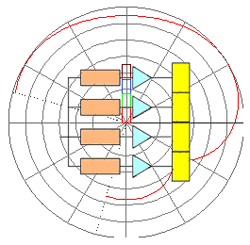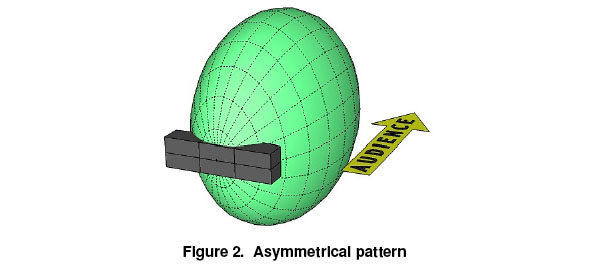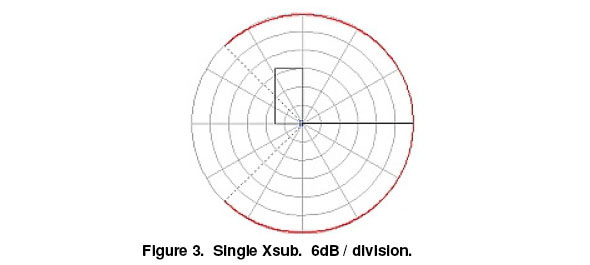
Basic Directivity Rule
For ordinary sound sources, directivity is inversely related to dimension. If an object is small, its directivity is wide; if large, its directivity is narrow. (See Figure 1) Remember that “small” and “large” are measured in wavelengths, not feet or meters.
Horizontal-Vertical Independence
The basic directivity rule applies independently in the horizontal and vertical planes. For example, a horizontal line of subwoofers might be large horizontally and small vertically. Therefore, its directivity would be narrow horizontally and wide vertically, as shown in Figure 2.
Multiple Sources and Lobing
Many, if not most, subwoofer installations use two separate arrays on opposite sides of the stage. Sometimes these arrays are stacked on the floor, sometimes they’re flown.
Either way, the multiple sources exhibit what physicists call “wave interference”, and what audio people call “comb filtering” or “lobing”.
Figure 3 shows the directivity of a single EV Xsub woofer at 50 Hz. In this example, size of the stage is 40×20 feet. The red trace is the polar pattern. Circles are 6 dB apart. The Xsub is essentially omnidirectional.



